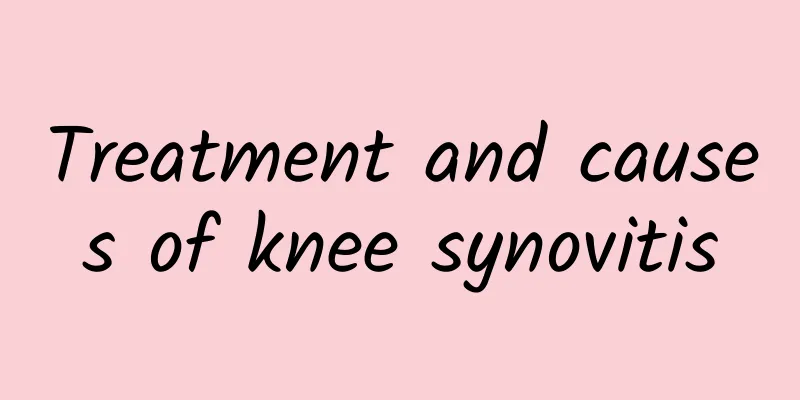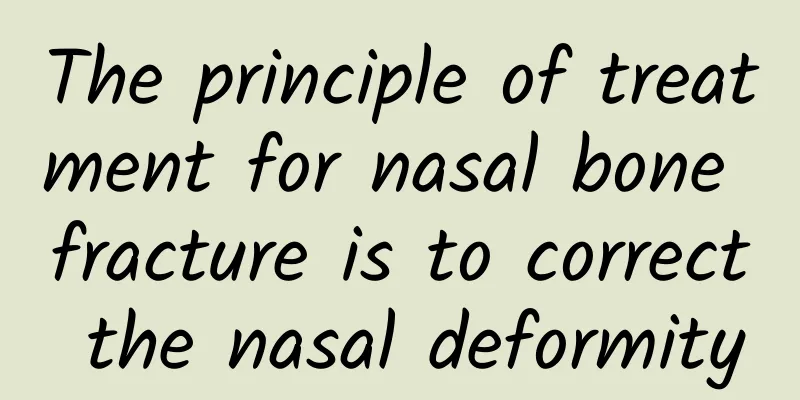Treatment and causes of knee synovitis

|
Knee synovitis is an inflammation caused by irritation or damage to the synovial membrane in the joint, which may be related to factors such as trauma, prolonged excessive activity or joint degeneration. Treatment usually includes rest, physical therapy, medication and surgery. Next, the causes of knee synovitis and effective treatment measures. 1 Causes of knee synovitis Knee synovitis may occur for a variety of reasons: Genetic factors: Although knee synovitis is not a hereditary disease, some people are more susceptible to synovitis due to genetic influences, weaker bone or joint structure. Environmental factors: For example, long-term heavy work, exercise or excessive physical labor may cause excessive friction and pulling of the synovium, leading to inflammation. Physiological factors: Degenerative changes in the joints are one of the common causes of knee synovitis, especially in middle-aged and elderly people. Due to long-term wear and tear of the synovium, inflammatory reactions are prone to occur. Trauma: Direct damage to the synovium, such as accidental collisions and sprains, may induce acute synovitis. Pathological causes: Certain diseases such as arthritis, rheumatoid arthritis, gouty arthritis, infectious synovitis or autoimmune diseases can cause symptoms of synovitis. 2 Treatment of knee synovitis The treatment of knee synovitis should be selected according to the severity of the disease. Common treatment methods include the following categories: Drug treatment: For patients with mild symptoms, non-steroidal anti-inflammatory drugs such as ibuprofen and diclofenac sodium can be used to relieve inflammation and pain; if necessary, intra-articular corticosteroids can be injected under the guidance of a doctor to quickly reduce local inflammation. Physical therapy: Local cold or hot compresses can relieve pain and promote blood circulation, and prevent swelling from worsening; physical rehabilitation training helps restore joint function and must be conducted under the guidance of a professional instructor. Surgical treatment: If the above treatment is ineffective and synovitis recurs over a long period of time, arthroscopic surgery can be used to remove the inflammatory synovial tissue; for more severe joint injuries, artificial joint replacement may also be considered. Motion control and protection: Avoiding strenuous exercise and excessive weight bearing, and using knee braces to reduce joint pressure are key. Diet management: Vitamin C, D and calcium supplementation contribute to bone and joint health. Eat more vegetables, fruits and foods rich in high-quality protein, such as fish, lean meat or nuts, and reduce the intake of high-purine foods to avoid worsening inflammation. Knee synovitis has a significant impact on life, and timely intervention is essential. In daily life, you should exercise regularly but avoid excessive exercise, and pay attention to protecting your knee joints, especially during weight-bearing or exercise. Once you suspect you have synovitis, you should seek medical diagnosis as soon as possible and develop a treatment plan that suits you to prevent symptoms from worsening or long-term recurrence. |
<<: What are the symptoms of cervical myofasciitis?
>>: What causes fetal hydrocephalus?
Recommend
How to treat tendon sheath inflammation effectively
Effective treatments for tenosynovitis include re...
What medicine is more effective for breast nodules and cysts?
The specific medication for breast nodules and cy...
Is a breast cyst 18mm big?
A breast cyst of 18mm is not particularly large, ...
Are lymph node tumors serious?
The severity of a lymph node tumor varies from ca...
Will breast cysts last a lifetime?
Breast cysts do not necessarily accompany you for...
Diseases caused by gallstones
Gallstones are one of the common digestive system...
Can I drink soy milk if I have breast cyst?
Patients with breast cysts can consume soy milk i...
What foods should not be eaten if you have breast cysts?
Patients with breast cysts need to avoid high-fat...
Gallstones preoperative examination items
A series of examinations are required before gall...
Symptoms of severe osteoporosis
Symptoms of severe osteoporosis include bone pain...
What should patients with gallstones pay attention to in their diet?
Patients with gallstones need to pay special atte...
How is spinal osteomyelitis diagnosed?
After sensitive antibiotic treatment, i.e. drug s...
Breast cysts Chinese medicine syndrome differentiation Chinese medicine prescription
Breast cysts are common benign lesions, and TCM s...
How to treat knee arthritis
Treatment of knee inflammation can be improved th...
Can I eat soy products if I have breast cysts?
Patients with breast cysts can usually eat soy fo...









